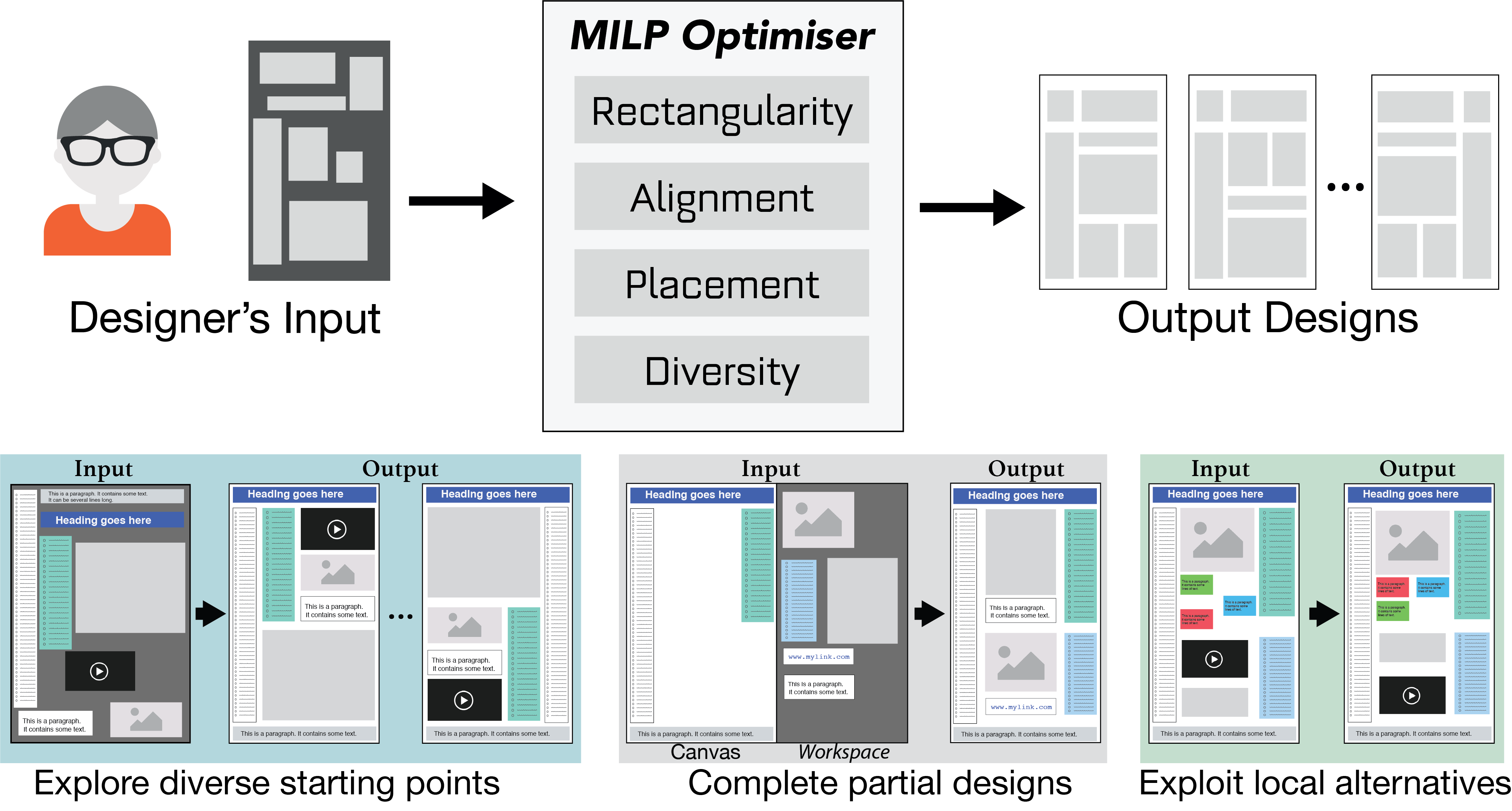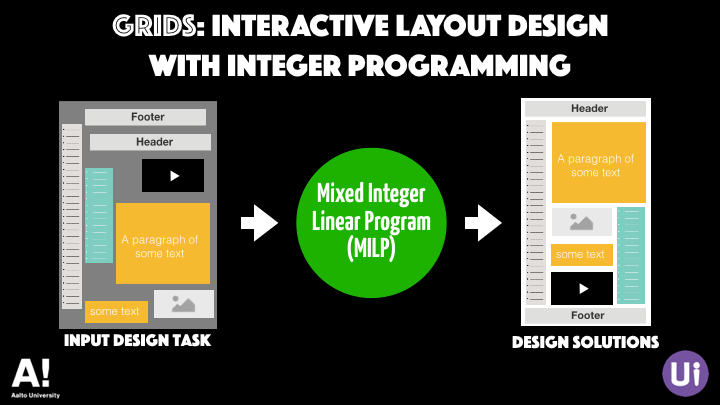
Generated layouts should ensure key grid layout objectives:
The design process should be supported by:

Grid layouts are used by designers to spatially organise user interfaces when sketching and wireframing. However, their design is largely time consuming manual work. This is challenging due to combinatorial explosion and complex objectives, such as alignment, balance, and expectations regarding positions. This paper proposes a novel optimisation approach for the generation of diverse grid-based layouts. Our mixed integer linear programming (MILP) model offers a rigorous yet efficient method for grid generation that ensures packing, alignment, grouping, and preferential positioning of elements. Further, we present techniques for interactive diversification, enhancement, and completion of grid layouts. These capabilities are demonstrated using GRIDS1, a wireframing tool that provides designers with real-time layout suggestions. We report findings from a ratings study (N = 13) and a design study (N = 16), lending evidence for the benefit of computational grid generation during early stages of design.
Our mixed-integer linear programming (MILP) model ensures real-time generation of good grid layouts. The layout engine is implemented in Python, and uses the Gurobi optimiser. On running the layout engine with an input design task (JSON format), it outputs several design solutions within a short amount of time.
Along with the source code, sample input files are available in our repository at:
You can also find additional documentation of the mathematical formulations here:
GRIDS Mathematical Formulation, PDF, 145 KB
PDF, 4.4 MB
GRIDS: Interactive Layout Design with Integer Programming.
In Proceedings of the 2020 CHI Conference on Human Factors in Computing Systems (CHI ’20).
@inproceedings{dayama2020grids,
author = {Dayama, Niraj and Todi, Kashyap and Saarelainen, Taru and Oulasvirta, Antti},
booktitle = {Proceedings of the 2020 CHI Conference on Human Factors in Computing Systems (CHI '20)},
title = {{GRIDS: Interactive Layout Design with Integer Programming}},
year = {2020},
publisher = {ACM},
doi = {https://dx.doi.org/10.1145/3313831.3376553},
keywords = {Grid Layouts, Creativity Support, Computational Design, Mixed-Initiative, Optimisation, Design Tools},
series = {CHI '20}}
For questions and further information, please contact:
Kashyap Todi
kashyap.todi@gmail.com
Acknowledgements: This work has been funded by the European Research Council (ERC) under the European Union’s Horizon 2020 research and innovation programme (grant agreement 637991).